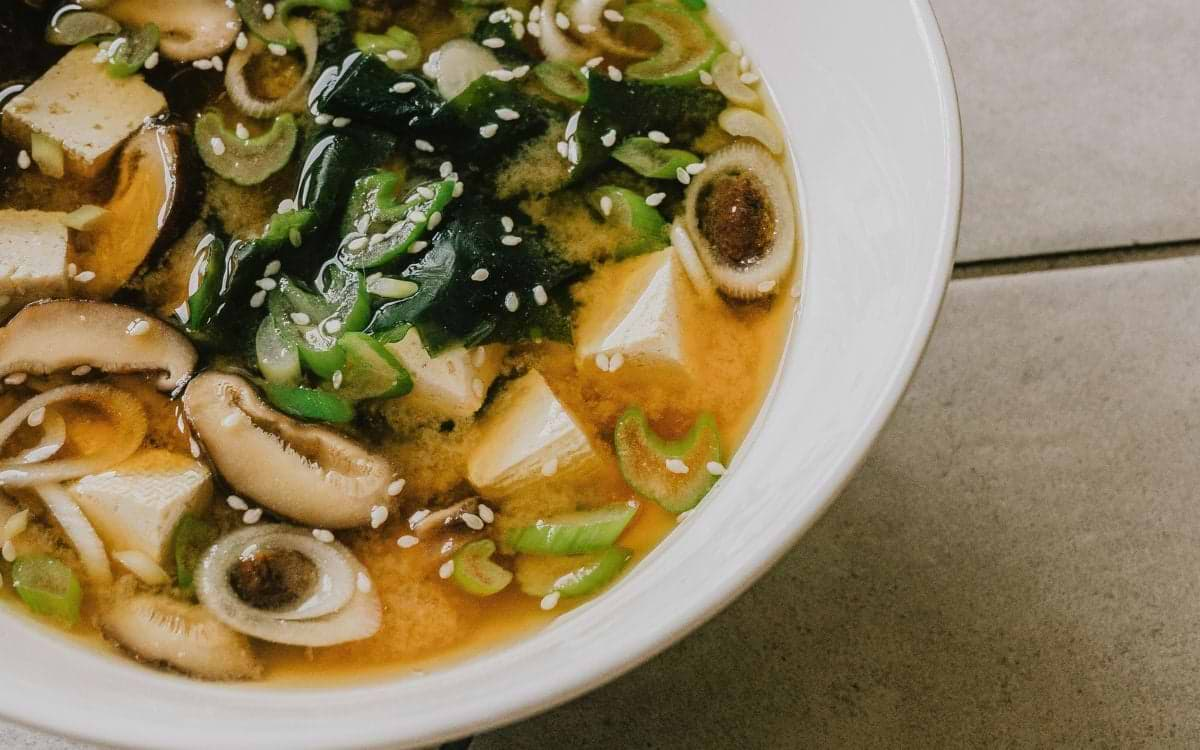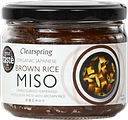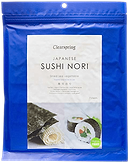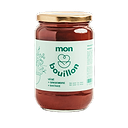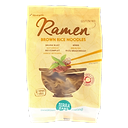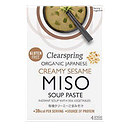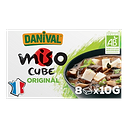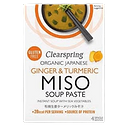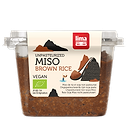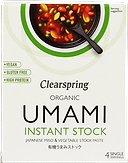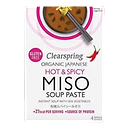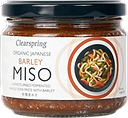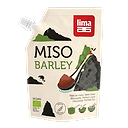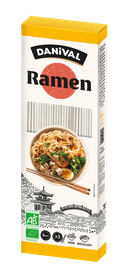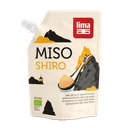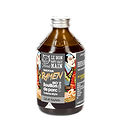A key ingredient in Japanese cuisine, miso is a fermented paste made from soybeans, rice, or barley, combined with salt and the famous koji ferment. It is known for its deep taste, rich flavors, and numerous health benefits. Today, it is used well beyond the borders of Japan, in traditional recipes like miso soup or in more creative dishes like ramen, marinades, or sauces. Whether you're curious to discover this product or looking to make your own paste, this article explains everything about this essential Japanese ingredient.
Origin and History of Miso
The Beginnings in China
Although miso is now closely associated with Japanese cuisine, its origins trace back to ancient China. As early as the 3rd century BCE, the Chinese used a similar fermented paste called "shi". This condiment was primarily made from fermented soybeans and served as a seasoning for various dishes.
Introduction to Japan
It wasn't until the 7th century that miso made its way to Japan, introduced by Buddhist priests. At that time, it was considered a luxury product reserved for the nobility and the wealthy due to its value and high cost. Over time, miso became democratized and became a central element of Japanese cuisine.
Evolution Over the Centuries
During the Kamakura period (1185-1333), miso was consumed with rice, dried fish, and fresh vegetables, making it an essential part of a typical Japanese meal. It was only during the Muromachi era (1337-1573) that Buddhist monks discovered that soybeans could be ground into a paste, which led to new ways of using miso to flavor other foods. This discovery contributed to the diversification of miso types and their integration into various recipes.
Health Benefits of Miso
Miso is known for its numerous nutritional and therapeutic benefits. Here are some of its main advantages:
Source of Probiotics
Due to its fermentation process, miso is rich in probiotics, the beneficial bacteria that promote a healthy gut flora. Regular consumption of miso can thus improve digestion and strengthen the immune system.
Rich in Antioxidants
Miso is rich in antioxidants, particularly due to the fermentation process. This fermentation allows the production of bioactive compounds, including antioxidants such as isoflavones (found in soy) and certain organic acids.
These antioxidants play an important role in protecting cells from free radicals, which can accelerate cellular aging and promote certain chronic diseases. In addition to its rich taste, miso contains a variety of compounds beneficial to health, including antioxidants produced during fermentation. Among these, fermented soy isoflavones, such as genistein and daidzein, are particularly notable for their protective effect on cells and their regulatory action on hormonal balance.
The darker the miso, and the longer it is fermented (like hatcho miso), the higher its antioxidant content.
Source of Essential Nutrients
This fermented paste is a good source of protein, as well as vitamins (especially from the B group) and minerals such as zinc, manganese, and copper, which are essential for the proper functioning of the body. Another advantage: it has a low glycemic index (28) and does not cause a rapid spike in blood sugar levels.
Support for Cardiovascular Health
Consuming miso may have a beneficial effect on blood pressure, particularly by reducing nocturnal pressure in individuals with mild hypertension. However, due to its high sodium content, it is recommended to consume miso in moderation.
Different Varieties of Miso
The list is long! There are many varieties of miso. Here are a few examples:
- White miso (shiro miso), with a mild taste and a short fermentation time. It’s perfect for sauces, soups, light ramen, or dressings.
- Red miso (aka miso), darker and saltier, often used in stews or marinades.
- Hatcho miso, made solely from soybeans with no rice or barley, and highly fermented, with a strong flavor.
- Flavored misos, sometimes enriched with yuzu or other citrus fruits, which add a unique twist to your dishes.
Some products are available in a dehydrated version, ideal for instant broths or on-the-go use. However, be sure to check the ingredients, as some versions, especially non-organic ones, can be rich in additives.
How to Use Miso in Cooking
Miso is incredibly versatile. It enhances soups, marinades, and sauces. It’s commonly found in ramen broths, used as a base for grilled tofu preparations, or to enrich creamy sauces.
It can also be incorporated into sweet-savory recipes, such as miso cookie dough for a unique flavor. For vegan enthusiasts, miso adds character to roasted vegetable dishes, salad dressings, or even a rice vinegar-based vinaigrette.
How to Make Your Own Homemade Miso
Looking for a new culinary adventure? Making your own miso is an accessible experience with a bit of patience. Here’s how to do it.
Ingredients:
- 500 g of yellow soybeans (dehulled)
- 500 g of rice koji (fresh or dehydrated)
- 120 g of salt
- 15 g of unpasteurized miso (optional, to start the fermentation)
Equipment:
- 1 fermentation jar (glass, ceramic, or food-safe plastic)
- 1 food processor
- 1 large bowl, parchment paper, weight (bag filled with salt, stone, ceramic...)
Preparation Steps:
- Soak the soybeans overnight, then cook them until they easily crush under your fingers.
- Mash the cooked soybeans into a paste.
- Mix with the koji, salt, and existing miso.
- Form a homogeneous paste, compact enough to shape into a ball that holds without crumbling.
- Transfer the paste into the jar, pressing down well to remove any air bubbles.
- Cover with a disc of parchment paper and add a weight (a bag filled with salt or a glass weight).
- Allow to ferment for at least 6 months in a dark, room-temperature spot.
This artisanal product will develop complex flavors over time. After fermentation, you can transfer it into smaller jars and store it in the fridge. A great way to create your favorite miso, personalized to your taste.
Miso Recipe Ideas
There are countless dish ideas, as miso works with everything, and its flavor quickly becomes addictive! Here’s a small list of simple recipes to enjoy miso’s flavors every day:
-
Miso-Sesame Marinade for Roasted Vegetables
Mix miso, sesame oil, garlic, ginger, and maple syrup. Perfect for coating vegetables before roasting. -
Miso Sauce for Poke Bowls
Combine white miso, lemon juice, tamari, tahini, and a splash of water. Ideal on a rice bowl, raw veggies, and tofu. -
Quick Miso Soup
Dissolve 1 tablespoon of red miso in hot broth. Add mushrooms, seaweed, and soba noodles. -
Miso and Yuzu Dressing
A touch of miso and a few drops of yuzu juice are enough to give character to your salads.
Conclusion
Miso is much more than just a Japanese seasoning: it’s a concentrate of flavor, culture, and health benefits. Versatile and nourishing, it has conquered kitchens around the world. Whether you prefer it mild, bold, white, or hatcho, in a soup, marinade, or even in desserts, miso is a great ally to vary recipes, enrich dishes, and pack in natural flavors.
FAQ – Everything You Need to Know About Miso
-
Can you make miso without soybeans?
Yes, some versions are made with chickpeas or lentils, perfect for those with allergies. -
What is the best variety for miso soup?
White miso is mild and pairs perfectly with light vegetable broths. -
Does miso contain gluten?
Miso made from barley or wheat contains gluten. Choose a gluten-free version if you have an intolerance. -
Is miso salty?
Yes, miso has a fairly high salt content, but this helps with preservation and fermentation. There isn’t yet a low-salt version available. -
What is koji?
Koji is a rice or soy-based ferment, essential for making miso. -
Can miso be used in salad dressings?
Yes, when mixed with vinegar, it makes a flavorful dressing for salads. But don’t hesitate to try it in soups or marinades as well. -
How do you store homemade miso?
Store it in a sealed jar in the fridge. It keeps for several months. -
Is there a vegan version of miso?
Yes, most misos are naturally vegan, as they are made only with grains, water, salt, and ferment. For a higher quality product, opt for organic miso. -
Is dehydrated miso as good?
Convenient for quick broths, it’s slightly lower in probiotics but still retains its unique flavor. -
Where can I find a good selection of miso?
On Kazidomi, you’ll find a list of organic, artisanal misos, sometimes flavored with yuzu. Choose the one that suits you best, there’s plenty to choose from. Feel free to leave us your feedback and share your favorite recipe! We promise you’ll love it!
